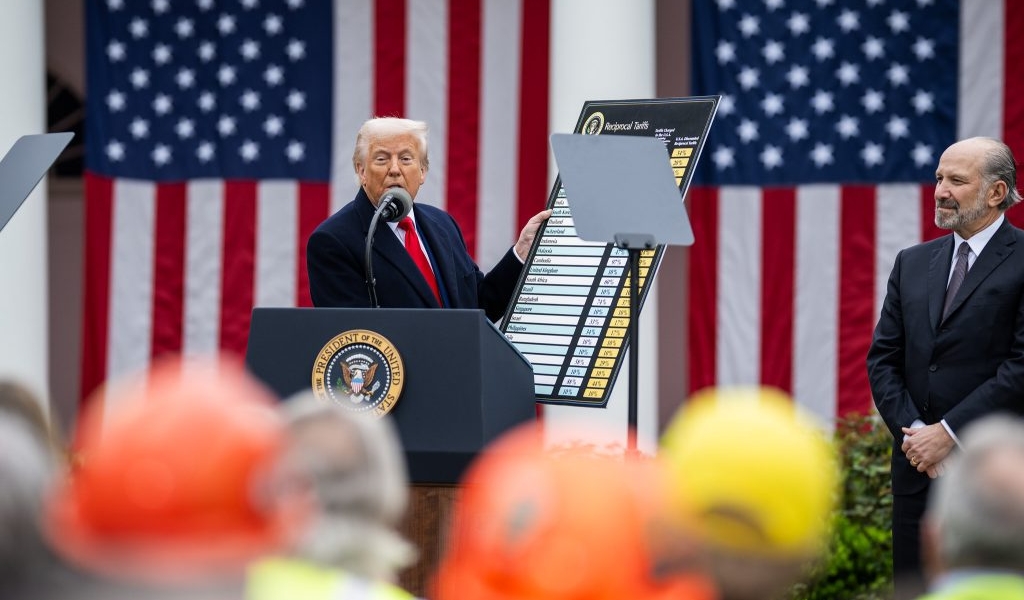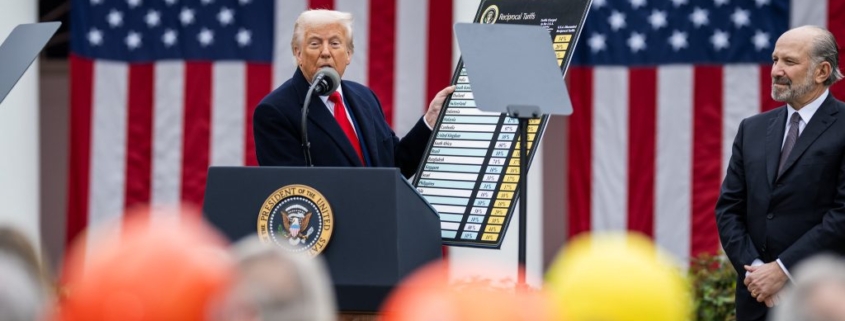Trump’s tariff war risks undermining US alliances in East Asia
New York Times columnist David Brooks once remarked that Donald Trump is the wrong answer to the right questions—a sentiment that captures the core challenge facing US policy in East Asia. Trump correctly identified the central geopolitical problem of our time: competing with and deterring an increasingly assertive China. His 2017 National Security Strategy rightly prioritised this challenge.
But identifying the problem is only half the battle. The real test is developing a coherent strategy—one that integrates military, economic, political and technological cooperation with key allies and partners: Australia, Japan, South Korea and Taiwan.
This is where Trump’s approach falls short.
Rather than viewing allies as indispensable partners in a long-term strategic competition, Trump sees them as economic adversaries exploiting the United States through ‘unfair’ trade practices. To be sure, there are valid trade issues that need addressing. But Trump’s blanket use of tariffs as a blunt instrument—particularly against allies—is the wrong tool at the wrong time.
Trump’s approach reflects a fundamental flaw: he views geopolitics through a transactional lens, akin to a series of real-estate deals. His calculus is short-term and zero-sum, overlooking the broader strategic imperatives of alliance management.
The reality is that the US’s true asymmetric advantage in its competition with China lies in its alliances and partnerships. Australia, Japan, South Korea and Taiwan are not merely regional players; they are crucial pillars of the Indo-Pacific security architecture. By alienating these allies and partners through punitive economic measures, Trump risks weakening the very coalitions Washington needs to counterbalance Beijing’s growing power.
These concerns extend beyond trade policy. Trump’s worldview treats alliances as conditional arrangements, contingent on financial contributions rather than shared strategic interests. His rhetoric—whether threatening to withdraw from NATO or questioning defence commitments to East Asia—has sown doubt among US partners.
The war in Ukraine has only amplified these anxieties. Should Trump curtail US support for Kyiv, it would send a dangerous signal to Indo-Pacific allies: that US security guarantees are unreliable, subject to the whims of a president who views allies as burdens rather than strategic assets. Such uncertainty plays directly into China’s hands, emboldening Beijing to press its advantage in the region.
Meanwhile, North Korea continues to expand its nuclear arsenal, forging closer ties with Russia. Kim Jong-un has made a strategic decision: nuclear weapons are the ultimate guarantor of his regime’s survival. The US intelligence community concurs—Kim is unlikely to give up his nuclear capabilities, regardless of diplomatic overtures.
The most effective way to deter North Korea remains a robust military posture, developed in close coordination with Japan and South Korea. Yet Trump’s transactional approach to alliances undermines the trust and cooperation necessary for such deterrence to hold.
At the heart of the US’s strategy in East Asia must be a clear understanding that alliances are not a burden—they are the cornerstone of US power. Tariffs may punish allies in the short term, but they will weaken the US’s hand in the long run. By alienating Australia, Japan, South Korea and Taiwan, Trump’s policies risk fracturing the very coalition that has kept peace in East Asia for decades.
In sum, Trump’s tariff war and broader transactional worldview risk eroding the very foundations of the US’s Indo-Pacific strategy. At a moment when regional stability hinges on US leadership, a weakened alliance network would play directly into China’s hands.
The US must not squander its greatest advantage: the collective strength of its allies and partners.



